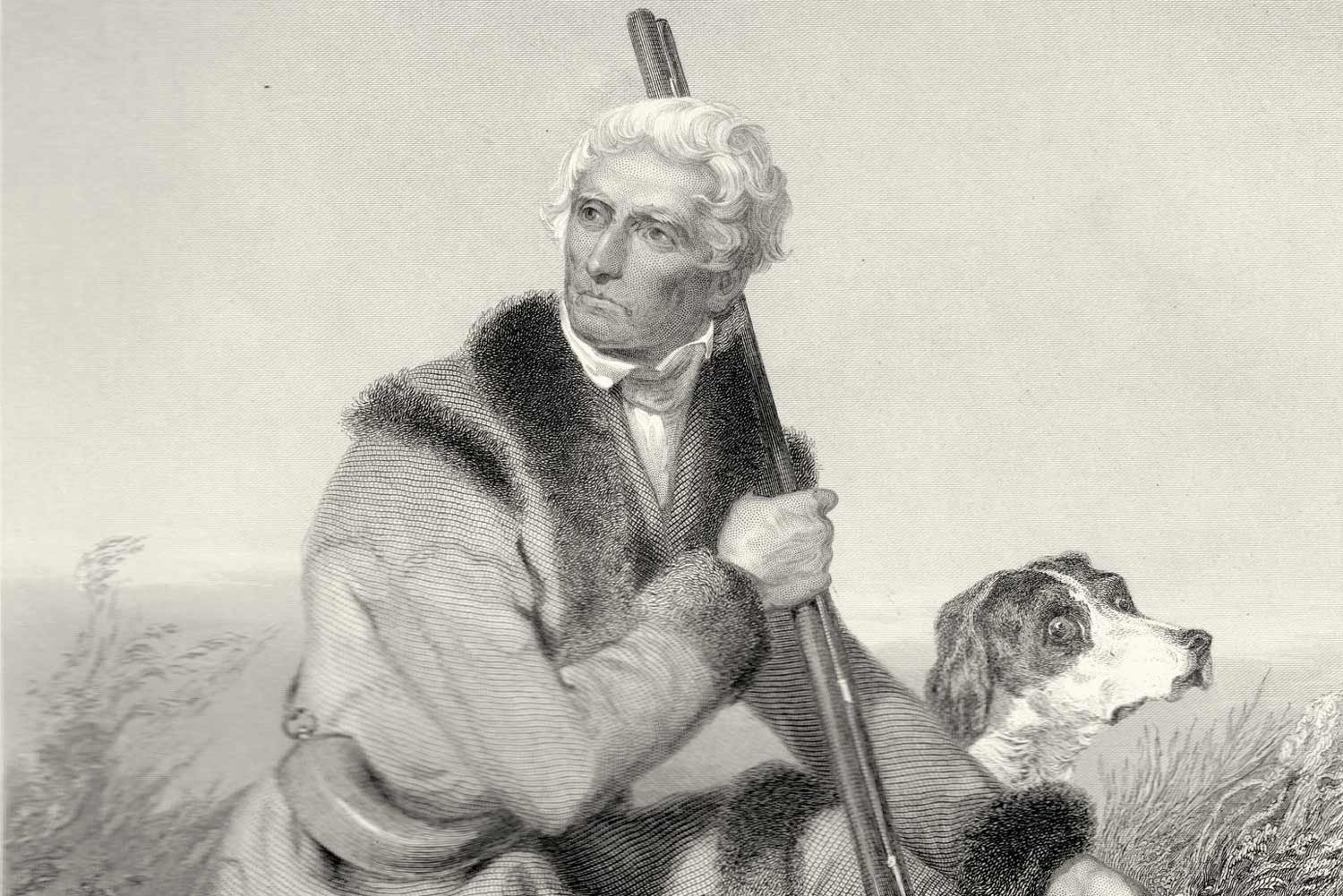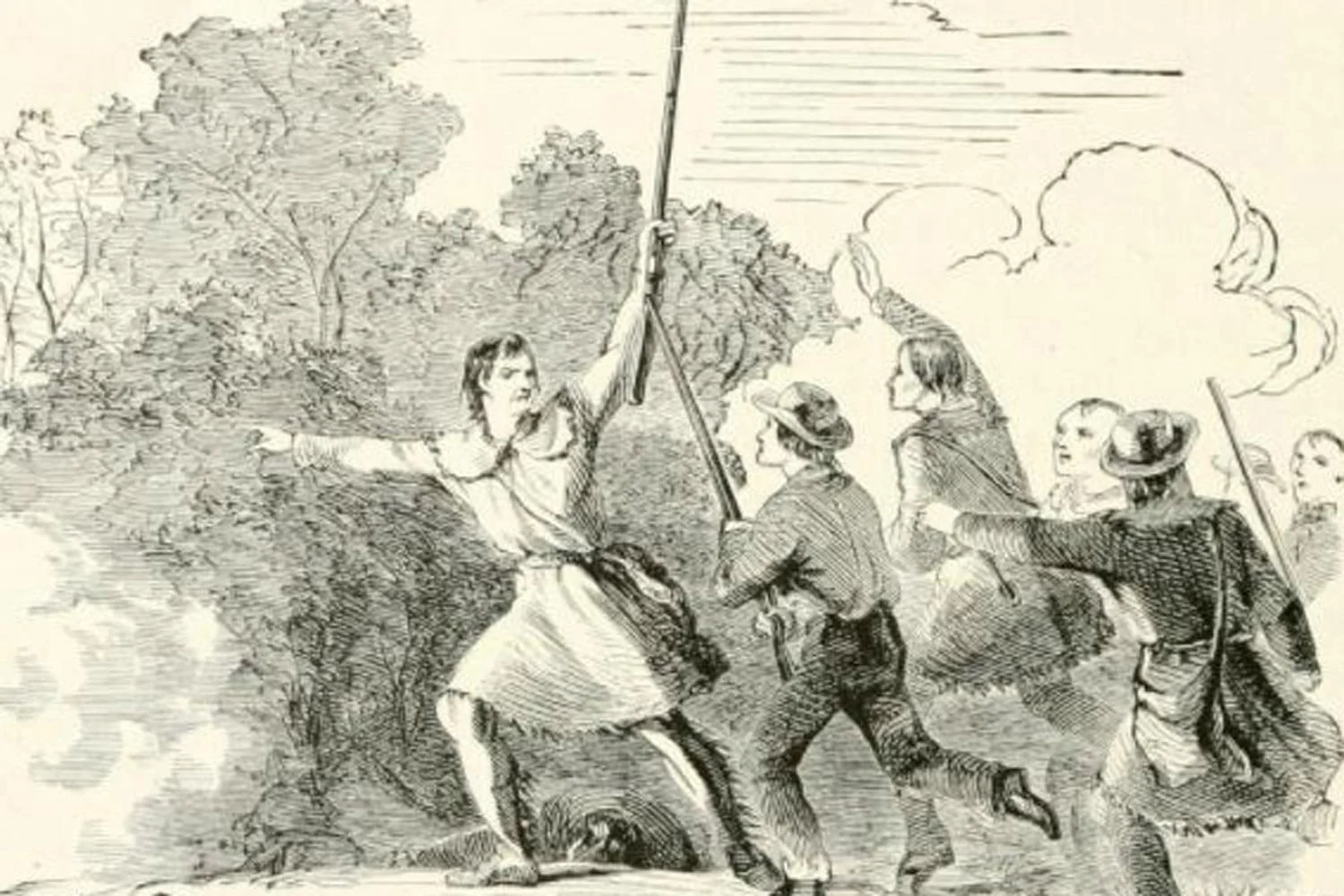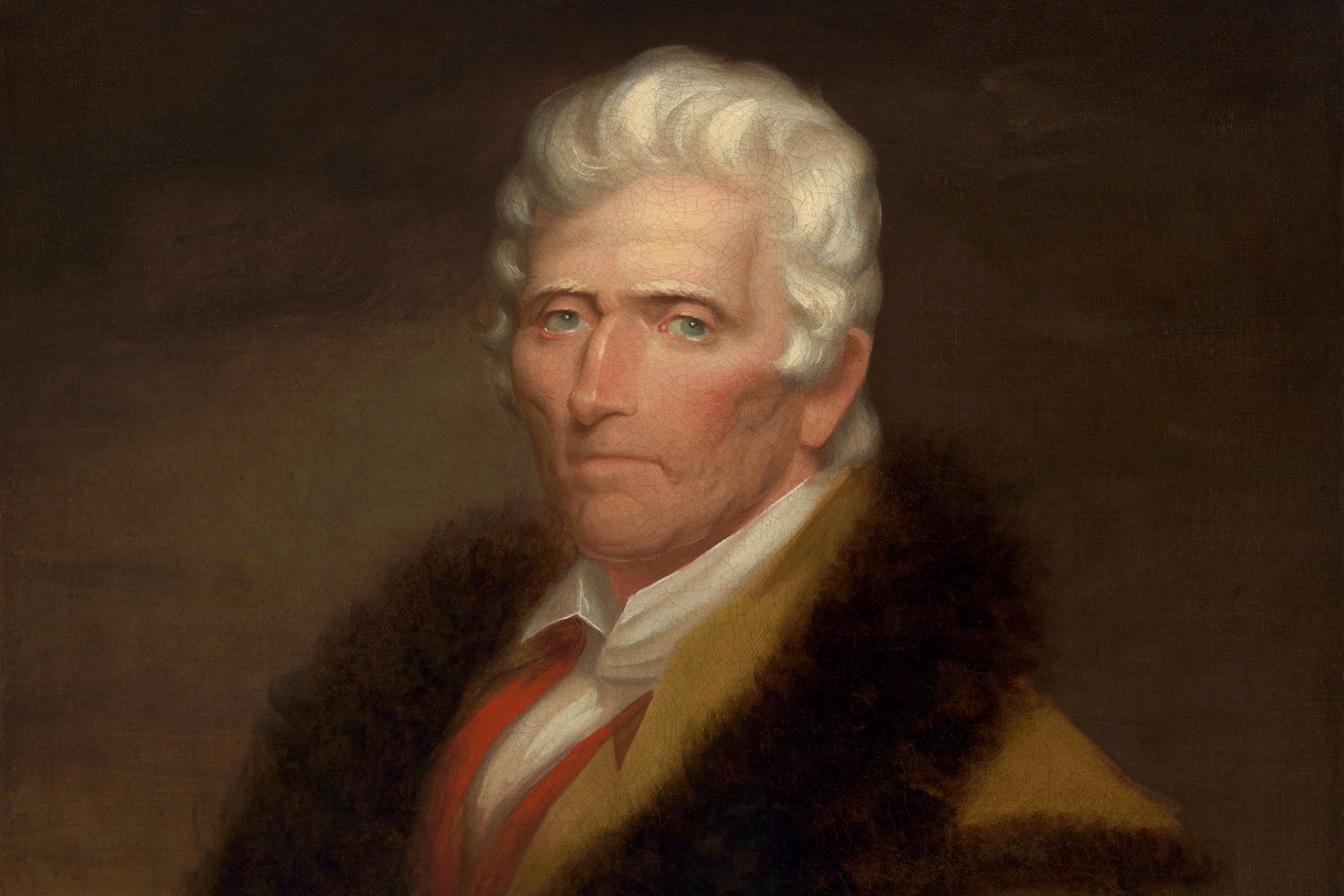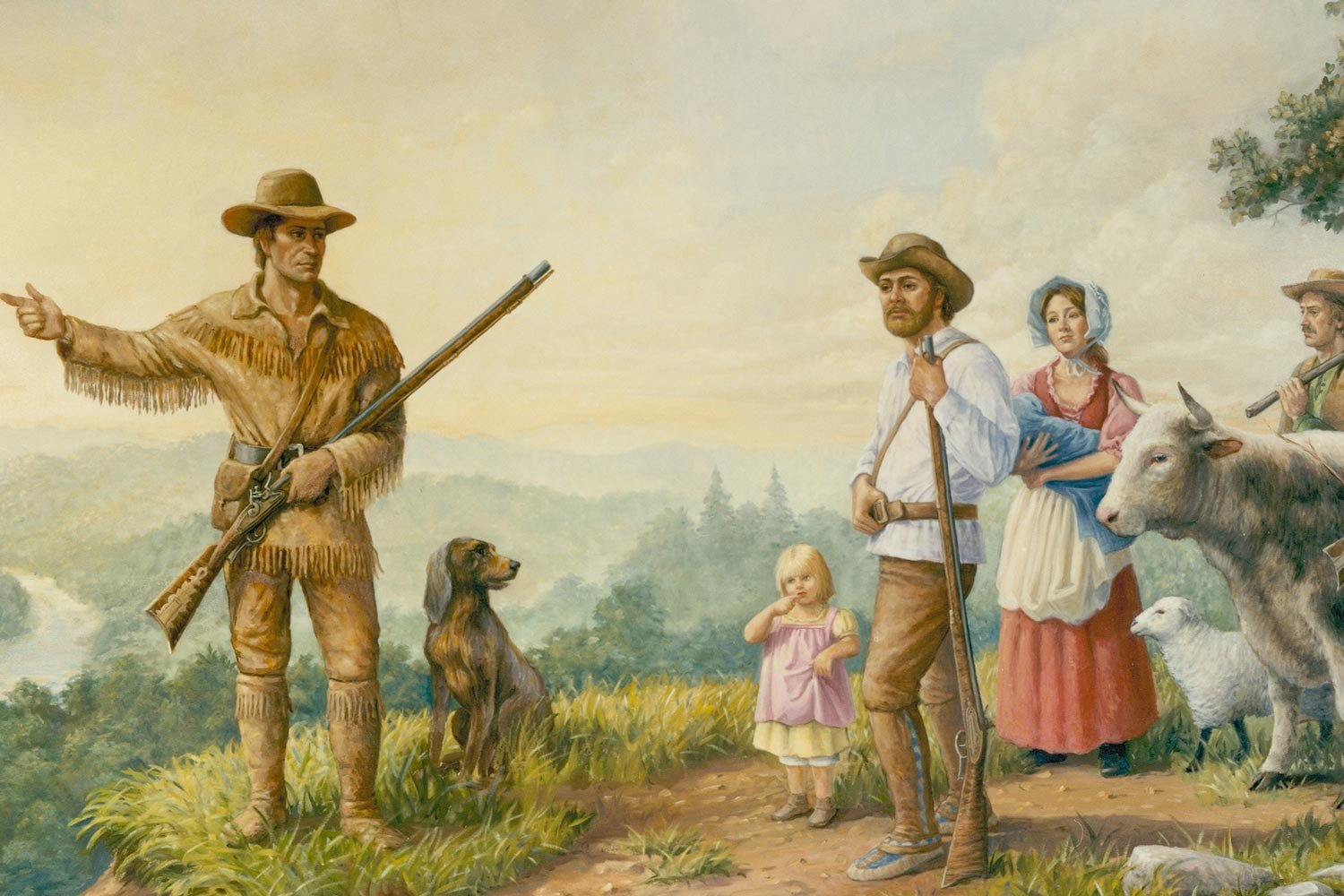The Legacy of Daniel Boone
Soon after the American Revolution began in 1775, Daniel Boone joined the Virginia militia of Kentucky County (later Fayette County) and was named a captain due to his leadership ability and knowledge of the area. Over the next several years, Boone would participate in numerous engagements.
In January 1778, Boone was captured by the Shawnee who adopted him and others into their tribe to replace some of their fallen warriors. Later that year, Boone made a harrowing escape and rode and walked 160 miles to Boonesborough, always just one step ahead of his captors, to warn the residents of an impending Indian attack. This feat added to Boone’s growing legend.
Francis Samuel Drake. “Daniel Boone At Battle of Blue Licks.” Wikimedia Commons.
Later in the War, Boone participated in the Battle of Blue Licks, fought on August 19, 1782, one of the last major engagements of the war. This fight, which pitted about 180 Kentucky militiamen against a combined force of 300 British Loyalists and Indians, was a crushing defeat for the Kentuckians. By all accounts, Boone acquitted himself well.
After the war, Boone was initially quite successful. He was elected to the Virginia General Assembly (when Kentucky was still part of Virginia) three times and was named a colonel in the county militia. Boone also served as the county sheriff and coroner.
In 1784, as Daniel turned 50, the historian John Filson published a book called The Discovery, Settlement and Present State of Kentucke, which included a chapter entitled The Adventures of Colonel Daniel Boon.
Filson’s story made Boone one of America’s first folk heroes and brought instant fame to Boone, at that time a woodsman unknown outside his region. Much like Henry Wadsworth Longfellow’s poem Paul Revere’s Ride turned Paul Revere, a relatively unknown silversmith, into an American legend, Filson’s book did the same for Boone, and his future seemed bright.
However, civilization soon got the better of Boone. He began to speculate in land deals that turned sour, and he even tried his hand at operating a general store, but with no success. Eventually, losses from these business dealings forced Daniel to sell off all his Kentucky property to pay debts and legal bills.
Disappointed with his financial troubles in Kentucky, Boone decided to get a fresh start elsewhere. In 1799, he left the United States and moved his extended family to Spanish controlled Upper Louisiana, near present day St. Charles County, Missouri. The Spanish government, happy to have an American legend residing there, gave Boone a large grant. The move to Missouri appeared to be working out, but that soon changed.
In 1803, the United States concluded the Louisiana Purchase and came into ownership of 828,000 square miles of wilderness, including Upper Louisiana. Upon the formal transfer of this vast territory to the United States, all of Boone’s land grants from Spain were voided and he lost all his claims. Despite numerous petitions, it was not until 1814, ten years later, that the United States Congress finally restored his property.
By then, he was 80 years old and father time had taken its toll on the aging woodsman. Although he continued to hunt and trap for the rest of his life, Boone quietly lived out his remaining days surrounded by his children and grandchildren. This iconic American who had experienced so much died on September 26, 1820.
After Boone’s passing, his life became the stuff of legend thanks to a variety of writers, all hoping to capitalize on the great American woodsman. Many of these stories were exaggerated tales and that is a shame because Boone’s life did not need embellishment.
This hardy man had that rare combination of courage and curiosity that allowed him to go where no man had gone before, regardless of the danger. In Boone’s case, it took him down the Wilderness Road that he carved out of the virgin forest, through the Cumberland Gap that split the Appalachians, and into the yet-to-be-settled fertile lands of Kentucky, giving encouragement to other Americans to follow in his wake.
WHY IT MATTERS
So why should the life and times of Daniel Boone matter to us today? Daniel Boone was a legend in his own time. This great American explorer, often taking his life into his own hands, blazed a path to the vast lands lying just over the Appalachians. More importantly, Daniel Boone is representative of those courageous early Americans, men and women, who ventured into the wilderness to carve out a new nation.
SUGGESTED READING
Daniel Boone by John Mack Faragher is one of the best books about this legendary frontiersman. Written in 1992, it provides a detailed account of Boone’s life and is easy to read.
PLACES TO VISIT
Fort Boonesborough is a living history state park located in Richmond, Kentucky. It is the location of Daniel Boone’s first settlement in Kentucky and includes an impressive replica fort and countless period artifacts. It is well worth a visit. Until next time, may your motto be “Ducit Amor Patriae”, Love of country leads me.






Soon after the American Revolution began in 1775, Daniel Boone joined the Virginia militia of Kentucky County (later Fayette County) and was named a captain due to his leadership ability and knowledge of the area. Over the next several years, Boone would participate in numerous engagements.